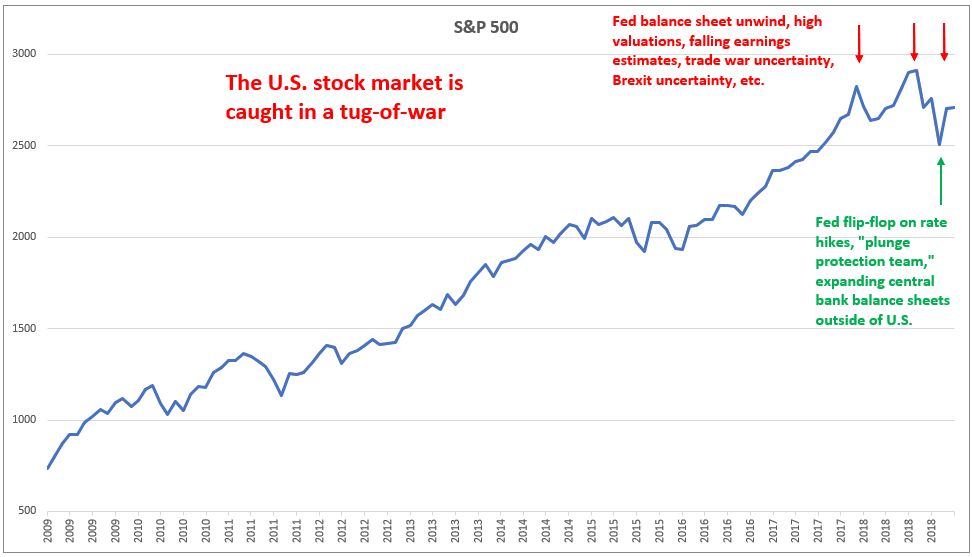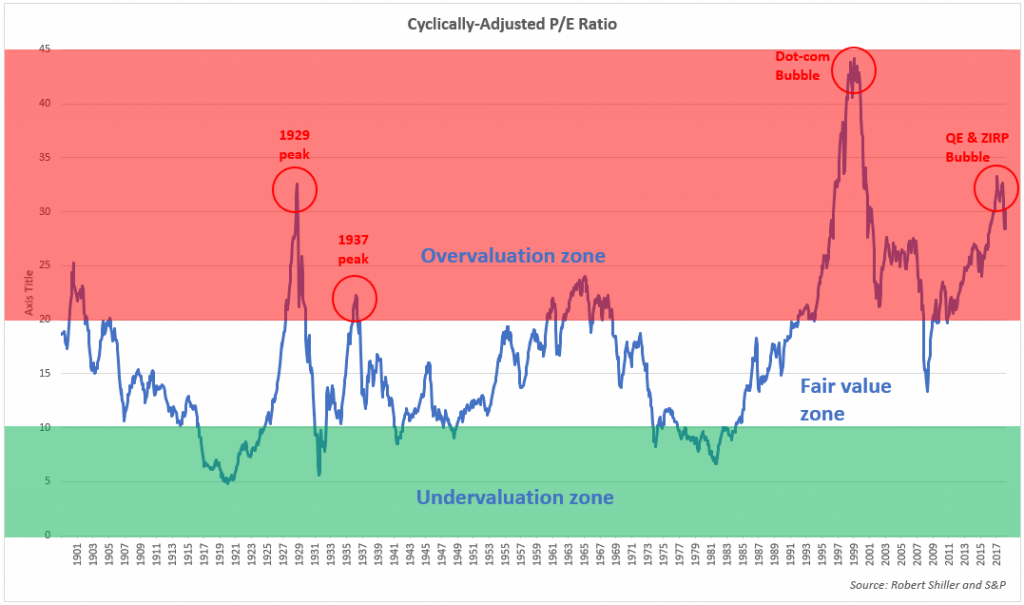The Market Is Caught In A Tug Of War
Ever since the market plunge and sharp reversal late last year, the financial markets have been trading in a truly bizarre, confusing manner. A Bloomberg piece describes this dynamic well – “Weird Market Moves Mean No One Knows If It’s Goldilocks Or Bust“:
Investors are riding helter-skelter markets — causing headaches as they try to figure out whether Goldilocks is back or recession is nigh.
From stocks, currencies to commodities, a slew of assets are moving in seemingly erratic ways.
Take the U.S. dollar — it’s on a rip higher ever since the Federal Reserve took a dovish pivot. Small-cap stocks are among the best-performing equities out there, even though the only thing everyone seems to agree on is that we’re late in the cycle. And industrial metals and miners are surging as the world’s biggest consumer slows down.
It all helps to explain the lack of consensus that’s been on display across markets this year.
“It’s very erratic and a clear direction is missing,” reckons Georgette Boele, a currency and commodity strategist at ABN Amro Bank NV. “There’s a lot of uncertainty with Brexit, trade negotiations, China’s economy, the weaker euro zone data and unclear picture about U.S. data — this all makes it a very hard market to trade.”
While bulls in credit and emerging markets are on the rampage, government bonds are getting a mammoth bid and outflows are hitting rallying stocks.
A New York Times piece describes the Fed’s 180-degree move a “flip-flop” (I called it a #FedFake) – “Flip-Flop by Fed Scrambles Outlook for World Markets“:
Once again, the Federal Reserve has upended markets.
Investors had been bracing for the Fed to keep raising interest rates and shrinking its vast portfolio of assets, the equivalent of tapping on the brakes of the United States economy.
But this year, the central bank has signaled that it was backing off.
Much has been written about the stock market’s joyful reaction to the Fed’s altered approach. But the impact was much broader than that. The central bank’s shift cascaded through markets around the world in ways large and small.
Essentially, the bizarre trading in U.S. stocks is the result of a tug-of-war that is occurring: the market wants to fall and needs to fall, but it is being propped up by the Fed and other central banks. The market “wants” to fall due to the downward pressure created by the Fed’s balance sheet unwind, high valuations, falling earnings estimates, uncertainty caused by the trade war with China, Brexit, etc., but is being propped up by the Plunge Protection Team, the Fed’s dovish turn, and foreign central bank balance sheet expansions.
(Click on image to enlarge)

The chart of the cyclically-adjusted P/E ratio below shows that the U.S. stock market is still quite overvalued, which explains the natural tendency for the market to fall unless it is actively being propped up:
(Click on image to enlarge)

How will this situation resolve itself? Unfortunately, I can only see it ending in chaos. Central banks are becoming increasingly desperate to keep the bubble markets inflated, which means that risk is being transferred to unbacked fiat (or “paper”) currencies. While this approach may assuage the fears of market participants for a while longer, it’s just a matter of time before the currencies themselves bear the brunt of the debasement.
For the author's full disclosure policy, click here.



